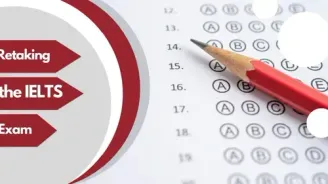Air Traffic Control In The USA Reading Passages
Air Traffic Control In The USA Reading Passage
A. An accident in the skies over the Grand Canyon in 1956 resulted in the establishing of the Federal Aviation Administration (FAA) to regulate and oversee aircraft operations in the skies over the United States, which were becoming quite congested. The resulting structure of air traffic control has dramatically increased flight safety in the United States, and similar air traffic control procedures are also in place over much of the rest of the world.
B. Rudimentary air traffic control (ATC) existed well before the Grand Canyon disaster. As early as the 1920s, the earliest air traffic controllers manually guided aircraft near the airports, using lights and flags. In contrast, beacons and flashing lights were placed along cross-country routes to establish the earliest airways. However, this purely visual system could have been more helpful in bad weather, and by the 1930s, radio communication was coming into use for ATC. New York City was the first region to have something that approximated today's ATC, with other major metropolitan areas following soon after.
C. In the 1940s, ATC centres could and did take advantage of the newly developed radar and improved radio communication brought about by the Second World War, but the system remained rudimentary. It was only after the creation of the FAA that full-scale regulation of America's airspace took place, and this was fortuitous, for the advent of the jet engine suddenly resulted in a large number of high-speed planes, reducing pilots' margin of error and practically demanding some set of rules to keep everyone well separated and operating safely in the air.
D. Many people think that ATC consists of a row of controllers sitting in front of their radar screens at the nation's airports, telling arriving and departing traffic what to do. This needs to be completed in the picture. The FAA realised that the airspace over the United States would at any time have many different kinds of planes flying for many different purposes in various weather conditions, and the same kind of structure was needed to accommodate all of them.
E. To meet this challenge, the following elements were put into effect. First, ATC extends virtually to the entire United States. From 365m above the ground and higher, the entire country is generally blanketed by controlled airspace. In certain areas, mainly near airports, controlled airspace extends to 215m above the ground and, near an airport, down to the surface. Controlled airspace is the airspace in which FAA regulations apply. Elsewhere, in uncontrolled airspace, pilots are bound by fewer regulations. In this way, the recreational pilot who wishes to fly for a while without all the restrictions imposed by the FAA must stay in uncontrolled airspace below 365m. In contrast, the pilot who does want the protection afforded by ATC can quickly enter the controlled airspace.
F. The FAA then recognised two types of operating environments. In good meteorological conditions, flying would be permitted under Visual Flight Rules (VFR), which suggests a firm reliance on visual cues to maintain an acceptable level of safety. Poor visibility necessitated a set of Instrument Flight Rules (IFR), under which the pilot relied on altitude and navigational information provided by the plane's instrument panel to fly safely. On a clear day, a pilot in controlled airspace can choose a VFR or IFR flight plan, and the FAA regulations were devised to accommodate both VFR and IFR operations in the same airspace. However, a pilot can only choose to fly IFR if they possess an instrument rating above and beyond the basic pilot's licence, which must also be held.
G. Controlled airspace is divided into several types, designated by alphabet letters. Uncontrolled airspace is designated Class F, while controlled airspace below 5,490m above sea level and not near an airport is Class E. All airspace above 5,490m is designated Class A. The reason for the division of Class E and Class A airspace is the type of planes operating. Generally, Class E airspace is where one finds general aviation aircraft (few can climb above 5,490m anyway) and commercial turboprop aircraft. Above 5,490m is the realm of heavy jets since jet engines operate more efficiently at higher altitudes. The difference between Class E and A airspace is that all operations are IFR in Class A, and pilots must be instrument-rated, skilled and licensed in aircraft instrumentation. This is because ATC control of the entire space is essential. Three other types of airspace, Classes D, C and B, govern the vicinity of airports. These correspond roughly to small municipal, medium-sized, and major metropolitan airports and encompass an increasingly rigorous set of regulations. For example, all a VFR pilot has to do to enter Class C airspace is establish two-way radio contact with ATC. No explicit permission from ATC to enter is needed, although the pilot must continue to obey all regulations governing VFR flight. An explicit ATC clearance is required to enter Class B airspace, such as approaching a major metropolitan airport. The private pilot who cruises without permission into this airspace risks losing their licence.
Air Traffic Control In The USA Reading Question & Answers
Have you read the passage? Now, take the test and find Air Traffic Control In The USA Reading answers!
Try to answer these questions by yourself before you sneak a peek at the answers given below.
Good luck!






